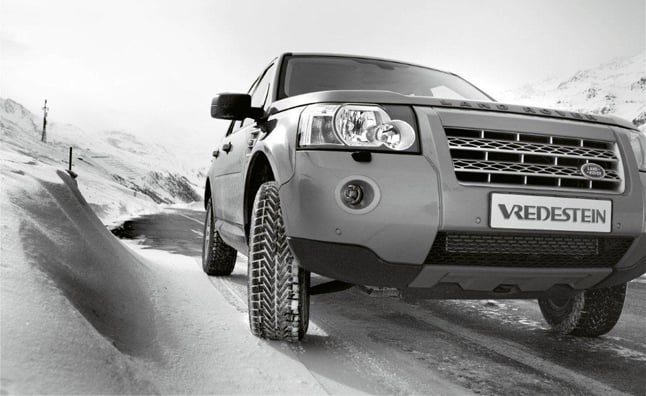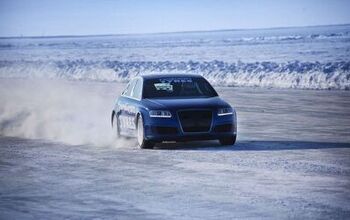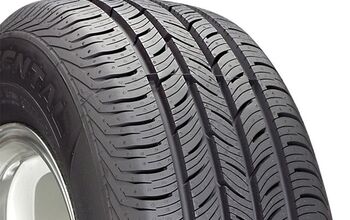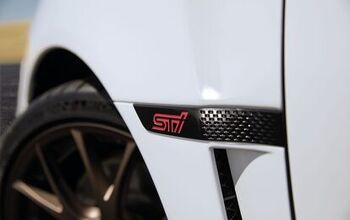Why You Need Winter Tires

With the temperatures dropping and snow falling, winter tires can’t be ignored as an important part of staying safe in slippery conditions.
Despite the name, all-season tires are not appropriate for winter weather. In delivering a comfortable experience in a wide range of temperatures, all-season tires are far too compromised for adequate winter performance. Even with mud and snow ratings, all-seasons don’t compare in grip and performance to real winter tires which feature the mountain and snowflake symbol on their sidewalls.
“In earlier years when a tire had the M+S symbol on the side we would say it was fit for use in mud and snow,” Rene Wolters of Vredestein Tyres said. “Most all-season tires have this M+S marking on the side, but do not nearly perform as a winter tire should.”
“A true winter tire performs much better than that and can be recognized by a symbol on its side depicting a little mountain top with a snowflake. Only tires with this symbol are suitable for use in true winter conditions,” Wolters said before emphasizing that “most All-season tires do not have this marking and are not fit for adequate use in the winter.”
He points out that the materials that make a tire stickier at low temperatures make them less grippy at higher temperatures. That means that winter tires are specially made for snowy seasons, while all-seasons are not made for any season in particular.
“Another important element in winter tires is siping,” Bridgestone product manager Kurt Berger said. Sipes are grooves that are cut into a tire’s tread block. “Siping is a major contributor to a winter-tire’s performance. It allows the tire to gain additional ‘biting edges’ for better grip.”
Depending on its placement, siping can affect noise, traction, water-removal and overall driving feel. A tire with straight, wide grooves will tend to have good anti-hydroplaning characteristics and should be less noisy than other tires. A tire with more lateral grooves will have more traction. However, too much siping and the tire can feel less stable and is likely to wriggle around on dry roads. Zig-zag siping patterns are another approach. Some of Bridgestone’s tires, for example, use that pattern, something Berger said enhances grip while corners.
Different types of Tires for Winter
Choosing the right winter tires isn’t easy. It helps to know if you’ll be dealing with icier driving conditions, or more snow. While no winter tire is designed specifically for ice, or snow, there are tires that cater more to one situation. Tires that are more suited for ice are made of a different chemical compound called silica which keeps the rubber flexible in colder climates. This results in better performance on ice, and it’s also likely that the tread on these tires will help keep noise down. Overall, tires that are made for ice will be better for drivers who spend a lot of time on freeways.
In contrast, snow biased winter tires have wider gaps between tread blocks, and are a bit stiffer. This makes them better at traversing up mounds of snow. “Snow grips to snow” explains Berger.
Some designs are shared between different types of winter tires.
“We found that in winter driving, a thin film of water lubricates the tire,” Berger explains, “So our ‘Multicell’ tread compound uses microscopic pores to help get rid of that water.” This technology is great for both snow and ice conditions.
Why take the chance?
Tires are the way a car interacts with the road. Even the latest high-tech safety systems, from advanced all-wheel drive to stability control, will be rendered useless if your car has no grip. When the road is all icy, or covered with slippery snow, you need a tire that can deal with those situations.
Winter tires feature specially designed tread patterns that provide more surface area to contact the road and provide superior grip.
Even cars with all-wheel drive should consider winter tires. All-wheel drive systems might help with stability in slippery conditions, but they won’t do much when you need to stop. Driving on a slope with no traction on your wheels, even with an all-wheel drive system can still prove to be dangerous. A set of winter tires provides the grip necessary to drive safely in any situation involving snow and ice.
Plenty of studies have been conducted to see how important winter tires are. A recent study conducted in Canada showed that no matter the vehicle, winter tires greatly decrease braking distances over all-seasons. In fact, one study showed when a car is travelling just 30 mph in winter conditions, that winter tires can reduce your stopping distance by up to 25 percent, or between two to three car lengths.
Some drivers think that they can get away with just using two winter tires, to be put on a cars driving wheels. This is a big mistake and can be dangerous in the snow. “Using a different set of tires on front than the rear can cause problems when cornering,” said Berger. He explained that when two different sets of tires are used, one end of the vehicle will likely lose traction during cornering situations.
A big concern about winter tires is when to put them on. All-season tires lose effectiveness at around 45 degrees Fahrenheit, which is about the same time you can see your breath. As soon as you start noticing your breath in the wind, its time to switch tires.

Sami has an unquenchable thirst for car knowledge and has been at AutoGuide for the past six years. He has a degree in journalism and media studies from the University of Guelph-Humber in Toronto and has won multiple journalism awards from the Automotive Journalist Association of Canada. Sami is also on the jury for the World Car Awards.
More by Sami Haj-Assaad




































Comments
Join the conversation
It is just a little bit snowy in Winnipeg tonight, but you've convinced me to put on the winter tires this weekend, and I'm gonna change the oil. I don't use a safety jack/s so I'm always a little bit scared the car will fall on me/ground. I mean it's a goodhydraulicjack and it's really not lifting that much lifting two tires off the ground, the cars got a goodunder-body, lots of places to jack from, all super stable, Ford actually makes this car super easy to work on. even like getting the oil drain plug and the filter, tons of space to move your arms around. But still, I'm on the ground and I'm never quite sure where i put that wrench. I think I'm going to wash the car first, but I want the underbody washed, but I already have a full tank of gas, and the gas station gives a huge discount on the automatic car wash(that does underbody(well)) IF you get a tank of gas, which I am already full on. So now I gotta go to the manual car wash... the car is pretty low to the ground so I really got to bend over to get the wand under it, then it's like I'm getting sorta covered in water from the splash back. This is like two clothes changes I have to do to get the tires and oil changed. THEN I need to clean the summer tires before I store them away. So a hassle but those blizzaks are SO good in the snow, so much fun to have so much traction in the snow with a rear wheel drive car, it's like you have 800hp and everything is in slow motion, doing like 20-40km/h through deep snow.
Snow tires are for people who can't drive even then they still can't...